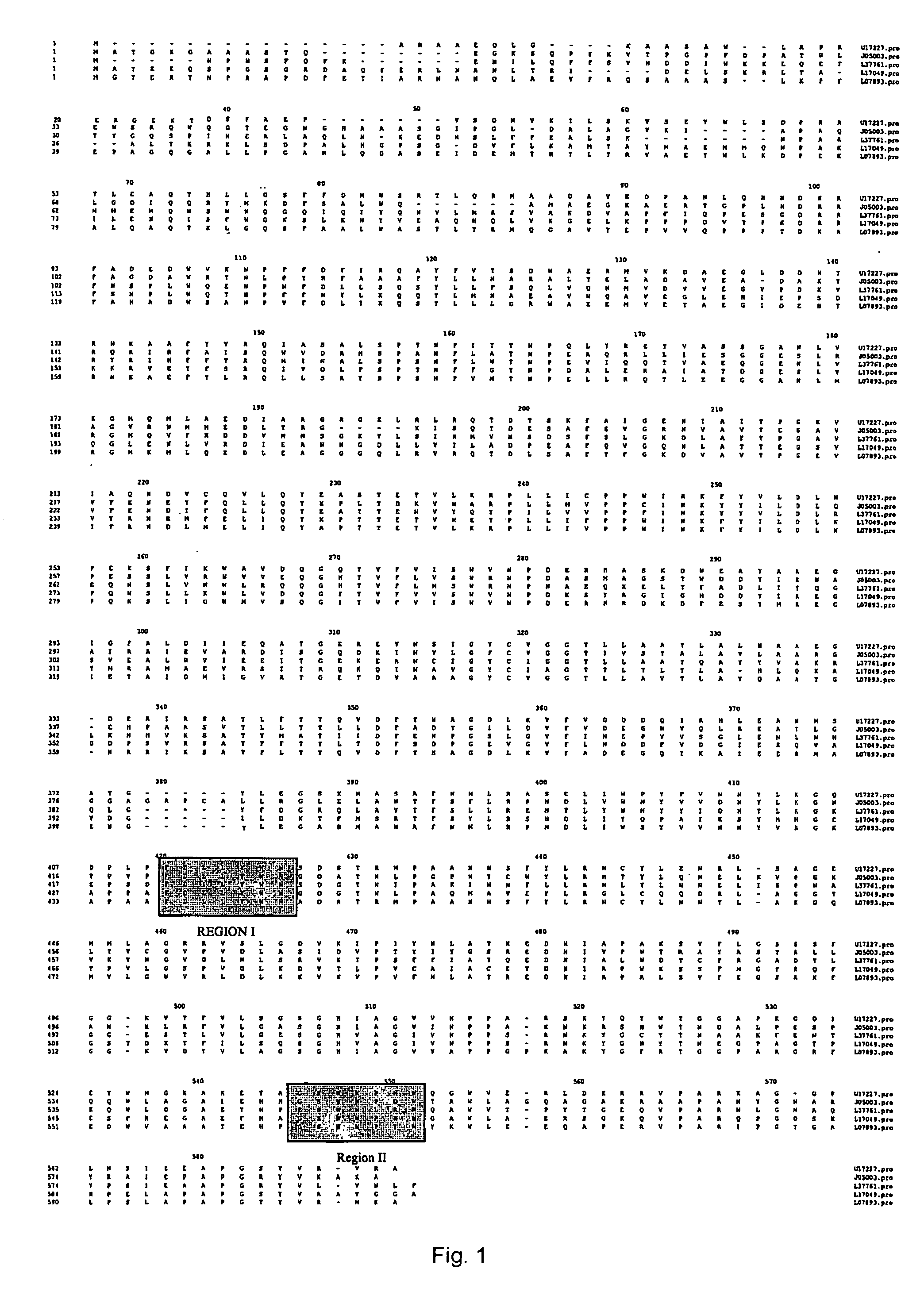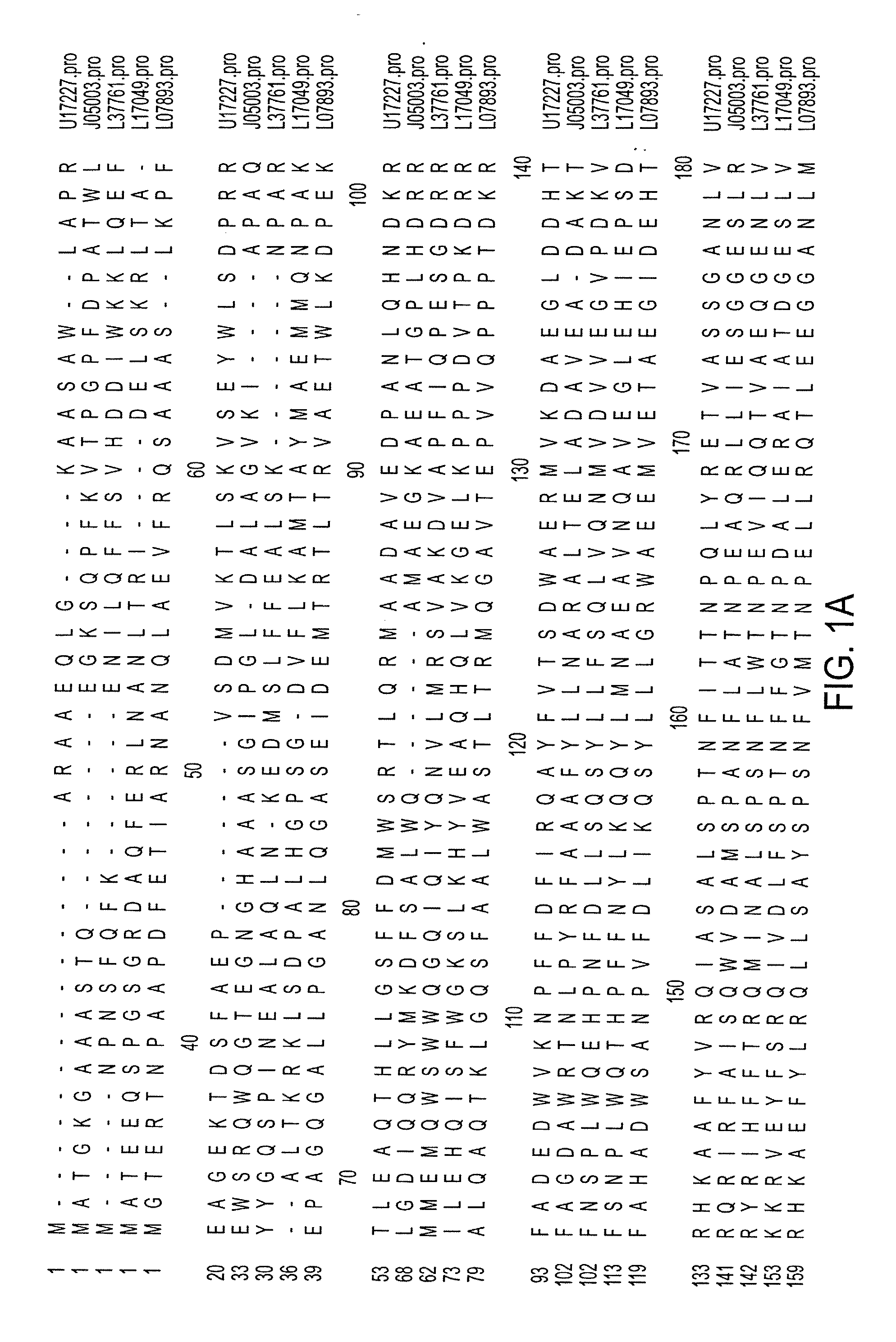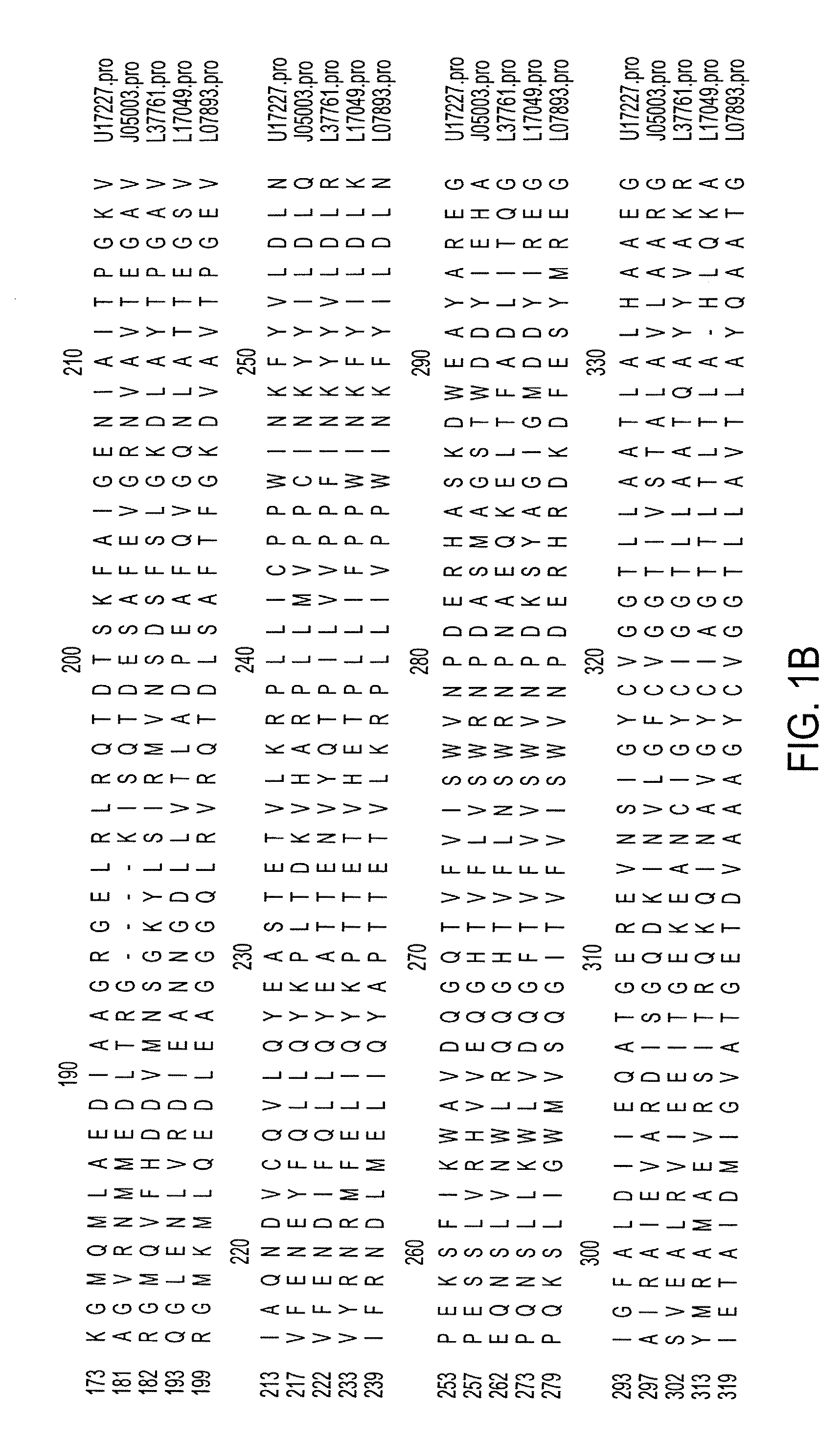Mutant bacterial strains of the genus sphingomonas deficient in production of polyhydroxybutyrate and a process of clarification of sphingans and compositions thereof
a technology of polyhydroxybutyrate and sphingans, which is applied in the field of mutants, can solve the problems of limited application, affecting the production efficiency of sphingans,
- Summary
- Abstract
- Description
- Claims
- Application Information
AI Technical Summary
Problems solved by technology
Method used
Image
Examples
example 1
Generation of a Sphingomonas elodea phaC Fragment
[0073] To identify highly conserved regions of the PHB synthase gene, PHB synthase sequences from diverse organisms were retrieved from the National Center for Biotechnology Information (“NCBI”) Gene Bank. Sequences from Rhizobium meliloti (gb: U17227) (SEQ ID NO: 1), Rhodobacter spaeroides (gb: L17049) (SEQ ID NO: 4), Methylobacterium extorquens (gb: 07893) (SEQ ID NO: 5), Alcaligenes eutrophus (gb: J05003) (SEQ ID NO: 2) and Acinetobacter sp. strain RA3849 (gb: L37761) (SEQ ID NO: 3) were selected and studied. The protein sequences of the selected PHB synthase genes were aligned as displayed in FIG. 1. Among the conserved regions, Region I (R. meliloti codons 411-417) and Region II (R. meliloti codons 535-541) were selected to provide a PCR product of about 408 bp based on their position and relatively low degree of degeneracy.
[0074] Degenerate PCR primers were designed to amplify the sequence between Region I and Region II based ...
example 2
Construction of phaC Deletion by Inverse PCR
[0077] Southern hybridization was used to determine an appropriate restriction enzyme that would provide a larger fragment of the Sphingomonas S-60 phaC gene that was still not too large for facile recovery by inverse PCR. Chromosomal DNA was isolated from Gps31 according to the method described in the QIAGEN® (Valencia, Calif.) DNA purification kit. A Southern analysis using a probe generated from the 408 bp insert (SEQ ID NO: 6) cloned in pEB1 demonstrated that in a PstI digest of S. elodea DNA, the 408 bp phaC fragment (SEQ ID NO: 6) resided on a fragment of about 2 kb.
[0078] The sequence of the 408 bp Sphingomonas S-60 phaC fragment (SEQ ID NO: 6) was used to select outward reading PCR primers, as illustrated in FIG. 2. Primer PHAC12 (SEQ ID NO: 11) reads toward the N-terminal end of the phaC encoded protein with a clamp 5′GTTC, an XbaI site TCTAGA, and hybridizing region GGC GCG ATC AGC TTG TTG TC3′. Primer PHAC11 (SEQ ID NO: 12) re...
example 3
Sequencing the phaC Clone
[0080] The 1.7 kb insert in pEB4 was sequenced and combined with the sequence of the 408 bp fragment (SEQ ID NO: 6). The combined 1920 bp DNA sequence (SEQ ID NO: 7) is depicted in FIG. 4. Part of this sequence, from the PstI site to the TGA stop codon (bases 1-1200) encodes a protein (SEQ ID NO: 8) which is homologous to the carboxy two-thirds of other phaC genes. Sequence alignment confirmed that the proper gene was cloned.
[0081] The phaC clone had a 232 bp deletion within the 408 bp segment and an insertion of 6 bp, TCTAGA, corresponding to the XbaI site. The deletion and insertion caused a frameshift mutation that altered the carboxy terminus and introduced a new termination codon at base pair 1102.
PUM
| Property | Measurement | Unit |
|---|---|---|
| light transmittance | aaaaa | aaaaa |
| light transmittance | aaaaa | aaaaa |
| light transmittance | aaaaa | aaaaa |
Abstract
Description
Claims
Application Information
 Login to View More
Login to View More - R&D
- Intellectual Property
- Life Sciences
- Materials
- Tech Scout
- Unparalleled Data Quality
- Higher Quality Content
- 60% Fewer Hallucinations
Browse by: Latest US Patents, China's latest patents, Technical Efficacy Thesaurus, Application Domain, Technology Topic, Popular Technical Reports.
© 2025 PatSnap. All rights reserved.Legal|Privacy policy|Modern Slavery Act Transparency Statement|Sitemap|About US| Contact US: help@patsnap.com



